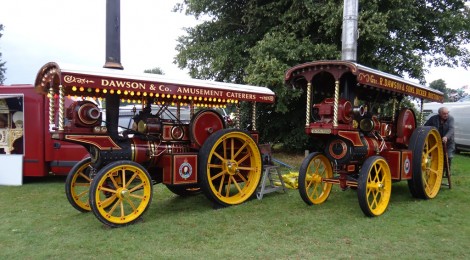
General T&I news from the RHEC…
With so much going on out on site, with the Festival of Transport dominating, I haven’t reported much on our other activities. We have had a bit of a structural shuffle round in the Transport & Industry department, with Bob Fielding (previous T&I team leader) moving over to Site Support & H&S (still in our department) and Jonathan Kindleysides (who contributes to this blog) taking on the role of Keeper of Industry. As a result, we need a Keeper of Transport, and this role is presently advertised on this website. I am looking for a technical person to assist me, to take on the day to day operational overview so I can focus on development work, infrastructure and projects (such as RHEC projects, Dunrobin, a servicing pit for Rowley, expansion of the narrow gauge etc. etc.). So, if you are interested, do have a look on the main Museum website at the job spec and advert: http://www.beamish.org.uk/vacancies/
Below: We start this report with a quick look at Blackpool 31, breaking cover last weekend to show off its newly varnished paintwork. The photo is a little washed-out, as the paintwork looks deep and with strong colours. Wait until Sunderland 16 is finished…
Below: Darren and Mark, who form the Track & Plant team have had a busy period, but found time to connect up the new narrow gauge engine shed and lay in a siding (temporary) for the stone crushing display this coming weekend. This will enable the narrow gauge line to form part of the production line of material from crushing to laying and rolling.
Below: At the other end of the line the start of the long curve (also quite steep!) has been installed, and this work will progress through the year as time allows, a start on the triangle of lines that will eventually form the core part of the narrow gauge system. However, after this limb of the triangle I will have to seek out more 35m lb rail before further progress can be made.
Below: The narrow gauge pit has its first user, as Edward Sholto was brought up to be stripped in readiness for its annual boiler inspection. Overhauled injectors are awaited from the owner’s contractor, and once fitted we can look at a test steaming and hopefully return to service in the early summer – ideally the first full weekend of July (as we try to put on a bit more of transport interest on the first weekends of each month through the season).
Below: David Grindley shows off the pit and how vital it is for this type of work. I am currently working on a plan for a new pit at Rowley – much needed and long overdue and therefore a priority for the summer along with completion of the new water tower and coal dock there.
Below: This view shows how the shed will eventually enclose the pit, being based on the example at Chadwick Nick, Crich village.
Below: N&G 49, the horse tram, required new curved crown boards – the timbers that support the front of the platform floor. Tony created a jig and laminated up the required sections – see here before machining and in the jig along with the originals.
Below: With the flywheel fitted to the crankshaft on Samson, Dave has now made the key and fitted this, and as an added precaution, has fitted a tapered pin. His cunning jig is seen here assisting the drilling of the hole, subsequently reamed, for the taper pin, which has now been fitted.
Tomorrow (Wednesday) will see the final flurried preparations for the Great North Steam Fair which starts on Thursday and really isn’t an event to miss! We have a fantastic array of transport coming and in operation, so you can take a vintage bus ride, or tram ride, ride at the station or Waggonway or watch the shunting in the Colliery on both standard and narrow gauges, all interspersed with a large number of early cars, cycles, motorcycles and commercials out and about around the Museum. Don’t forget our Saturday evening photo session too – where a number of scenes are to be set up around the Museum for the benefit of those interested in photographing scenes without too much modern distraction.

















Recent Comments